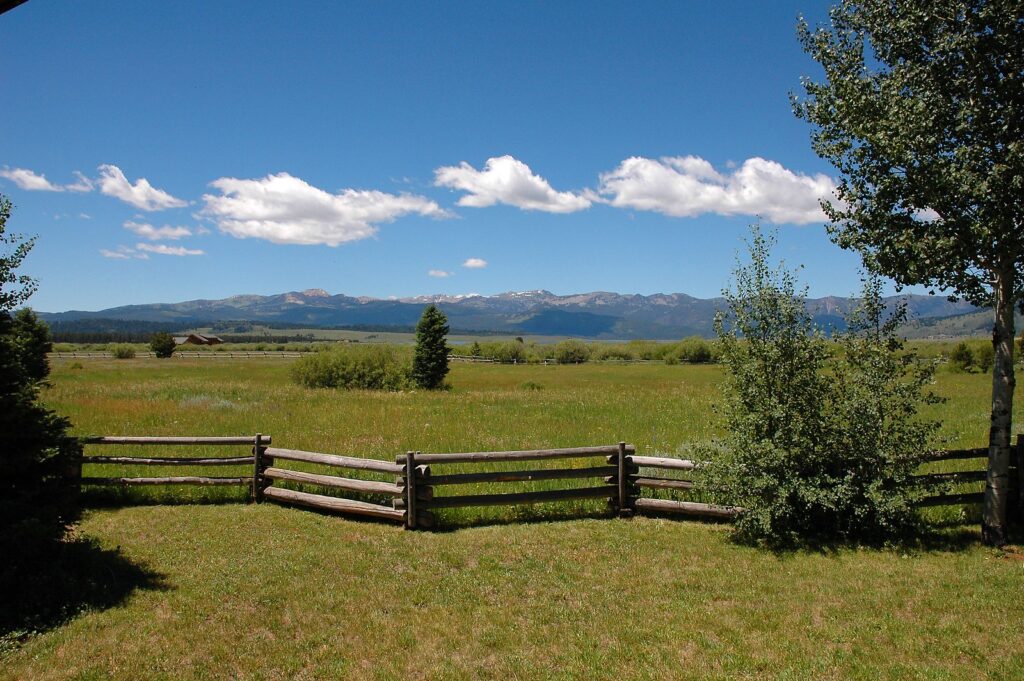This article was originally published in the Bozeman Daily Chronicle.
To celebrate the 50th anniversary of Earth Day, a series of talks at the Bighorn National Recreation Area is highlighting the benefits of public lands. It’s a worthy cause. But as Earth Day approaches, another topic deserves as much attention: the benefits that private lands provide to our western heritage.
Private lands play an important but often-overlooked role in sustaining many of the things we cherish most about the West. Whether it’s abundant wildlife, clean water, or vast open spaces, much of it depends on the actions of landowners such as ranchers and farmers. In fact, many of the West’s publicly managed resources rely on private lands in ways that are not always obvious.
Consider a few examples. In the Greater Yellowstone region, new research has documented the extent to which publicly managed elk, deer, and other migratory species depend on private lands for habitat. Using GPS collars, researchers have found that Yellowstone’s elk herds spend nearly half of their time on private lands, relying almost entirely on lower-elevation ranchlands during the winter.
The research underscores a crucial fact: The iconic elk herds that attract millions of visitors to the region and fill many hunters’ freezers need private landowners for survival. While Yellowstone National Park gets most of the attention—and most of the tourist dollars—it is nearby ranchers who provide critical winter habitat.
Private agricultural lands provide habitat for other prized game and non-game species as well. Montana’s Freezeout Lake Wildlife Management Area is an important spring stopover site for tens of thousands of migratory geese, ducks, and other waterfowl. Yet equally important are the nearby grain fields on private lands that many of the birds flock to feed in each day.
Altogether, private lands are home to more than 75 percent of the nation’s wetlands and more than 80 percent of its grasslands. Two-thirds of all threatened and endangered species can also be found on private land.
These examples illustrate an important reality that all westerners should appreciate: Wildlife may be a public resource, but private landowners provide much of the habitat—and that means they also bear most of the costs. In the case of elk, those costs include damaged crops, lost forage, and diseases such as brucellosis, which can be transmitted from elk to cattle. In the case of endangered species, landowners can be subject to burdensome regulations and land-use restrictions.
Despite what newcomers or tourists might think, our wildlife heritage doesn’t fall from our big sky; it is the result of individual actions by both private landowners and public land managers.
The continued viability of private working lands, however, is not guaranteed. Pressures to develop and subdivide loom large. And as populations of predators and other species expand, landowners shoulder even greater burdens. Disease risks from brucellosis are also increasing.
The fundamental challenge moving forward will be to work with private landowners, not against them, to find solutions that benefit both people and wildlife. Unfortunately, our public policies often get it backwards, creating perverse incentives that cause landowners to view wildlife as liabilities to be avoided rather than assets to be protected.
Aldo Leopold, the father of modern wildlife ecology, may have said it best. In 1934, he wrote that “the thing to be encouraged is the use of private land in such a way as to combine the public and the private interest to the greatest degree possible.” That means finding ways of “rewarding the private landowner who conserves the public interest.”
So on the 50th anniversary of Earth Day, let’s appreciate the public lands that are set aside for our use and enjoyment. But let’s not overlook the private landowners that often go unthanked. Because if we forget the contributions that private lands make to sustaining the West’s public natural resources, we could end up losing both.




